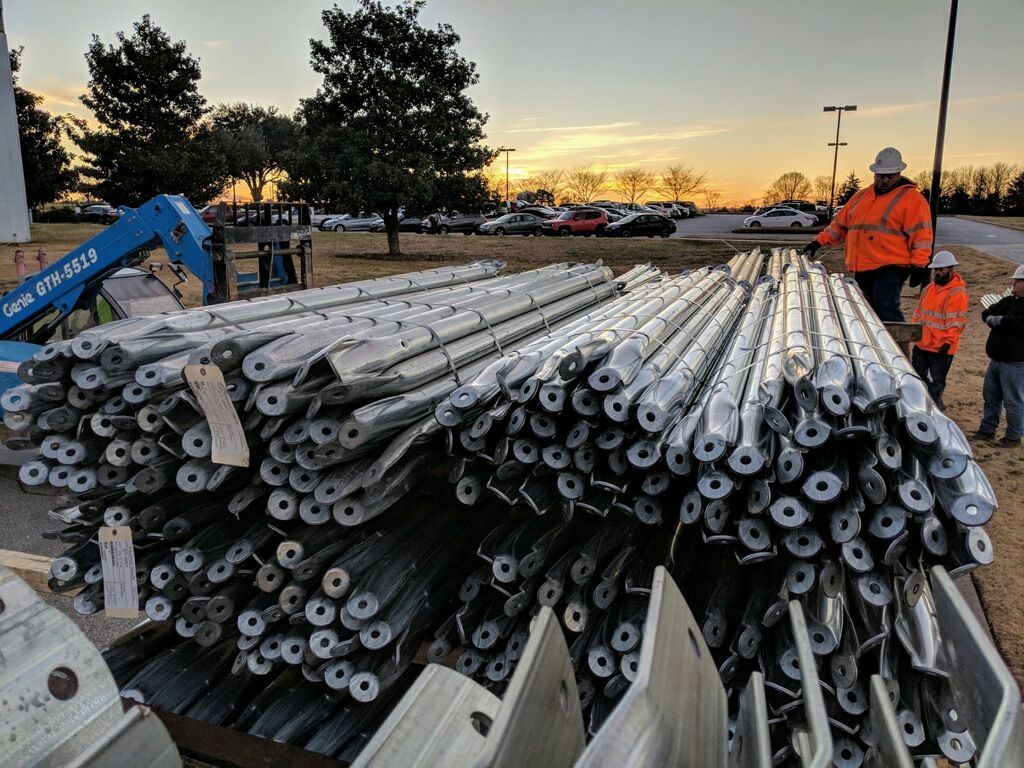COVID-19 supply chain delays have led to unprecedented delays in steel procurement over the past six months. The net effect of the factors driving the delays is a minimum 8-week increase in delivery time for raw steel coil, which is used to manufacture solar racking products. This unanticipated delay is unfortunately passed on to our customers.
The Key Factors Driving Supply Constraint:
1. Retirement of lower productivity steel mills due to historically low steel prices over the past several years
2. Reduction in overall US steel production capacity in anticipation of reduced demand as a result of COVID-19, which never materialized
3. Consolidation of the US Steel Industry, creating an effective duopoly that limits incentive to increase capacity
4. Retention of the steel tariff on Chinese and other imported steel, which prevents balancing of demand by global supply
How did we get here?
The sequence of events starts with economics. Over the past several years, steel prices have been relatively low and stable. As a result of these lower prices, the U.S. government initiated steel import tariffs in 2018 to address alleged dumping of foreign steel in our market. This led to an increase in global steel prices, roughly commensurate with the 30% tariff on steel imports. However, pricing remained relatively low and stable despite the tariff.
Stable pricing, largely not impacted by tariffs, led to the second driver of our current steel supply issue. The stable, low steel prices allowed steel mills to precisely assess the economic contribution of each mill in their portfolio. When sentiment turned negative in the steel industry as a result of COVID-19, the industry knew which mills were not performing and sought to close those underperforming mills permanently. That decline in demand due to COVID-19 never materialized.
Why demand has not been met with increased supply
As expected, the price of steel rose. In these circumstances, increased price typically leads to increased production. However, there are two factors at play that prevent the re-normalization of production. First is the consolidation of the U.S. steel industry, which has effectively become a duopoly. With fewer competitors, there is less incentive to increase production, as it will lower prices. So domestic steel companies are incentivized to keep U.S. steel production at a low level. Second, the global economy is not supporting a re-normalization of prices.
The global economy is not helping the US problem
The dynamic described above normally provides an entry for foreign suppliers. However, since demand has remained strong, other manufacturing countries, like China, have their choice of customers and countries in which they can sell their steel. The U.S. tariff makes the U.S. just about the least attractive market in the world. If the global market accepts a particular price, say $2,000 per ton, you must sell the steel to the U.S. at just over $1,400 per ton, to make it $2,000 per ton after tariffs. Nobody is going to sell steel for $1,400 per ton when they can sell it for $2,000. As a final nail in the coffin, there is a constraint on global logistics. So, even if a foreign company wanted to sell their steel to the U.S., shipping is, anecdotally, somewhere between 5 to 8 times more expensive than pre-pandemic levels.
What’s next?
At Quest, we order directly from the largest U.S. steel mills, so we have a front-row seat to the ebbs and flows of the market and some of the best purchasing power in the industry. Unfortunately, the issues of tariffs, consolidation, and pandemics are out of the scope of control for our company or our industry. As such, deadlines for project completions must adjust to the unforeseeable changes in demand.
We are seeing a little softening in the supply side of the market, partially due to raw steel increasing in price by well over 200% over the past year. As one of our suppliers said, “When skyscrapers get cancelled, demand goes down a lot, and the market will correct.”
There are more frequent reductions in the time from order to manufacturing of raw steel coil. We are not seeing a general reduction in lead time, but we are getting “special favors” in terms of getting shorter delivery times that weren’t available previously, so, we are seeing improvement. A return to normal lead times is just beyond this highly variable horizon. At this point, we believe the extended lead time will be reduced to four weeks by Q1 of 2022.
While the long lead times are out of our control, we advise our customers to account for this in their project planning. We will continue to communicate the trends we’re seeing in the industry with our customers, and hope that our transparency will help them to proactively manage the financial implications of project delays.
Sources:
